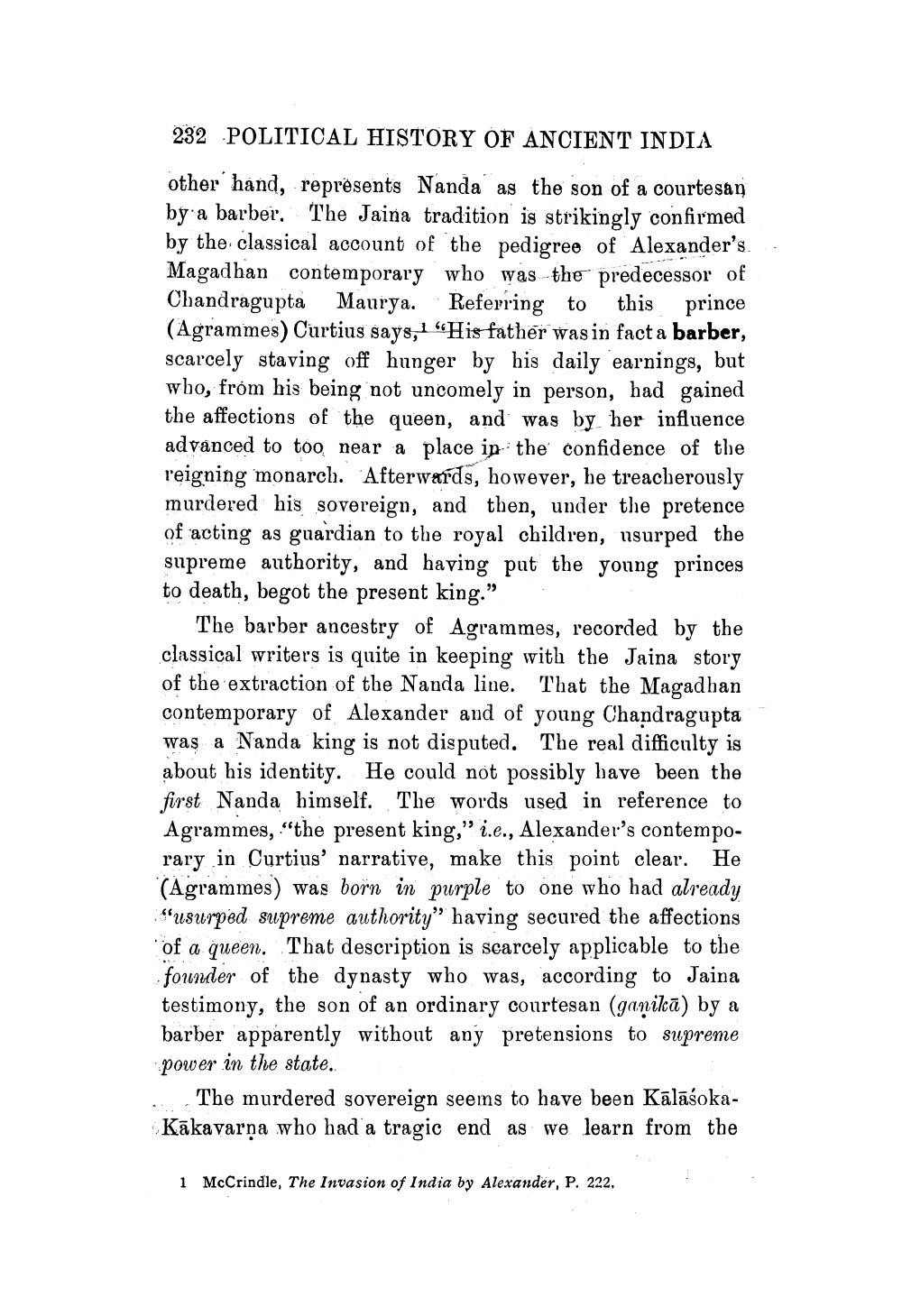________________
232 POLITICAL HISTORY OF ANCIENT INDIA other hand, represents Nanda as the son of a courtesan by'a barber. The Jaina tradition is strikingly confirmed by the classical account of the pedigree of Alexander's. Magadhan contemporary who was the predecessor of Chandragupta Maurya. Referring to this prince (Agrammes) Curtius says,1 "His father was in fact a barber, scarcely staving off hunger by his daily earnings, but who, from his being not uncomely in person, had gained the affections of the queen, and was by her influence advanced to too, near a place in the confidence of the reigning monarch. Afterwards, however, he treacherously murdered his sovereign, and then, under the pretence of acting as guardian to the royal children, usurped the supreme authority, and having put the young princes to death, begot the present king.”
The barber ancestry of Agrammes, recorded by the classical writers is quite in keeping with the Jaina story of the extraction of the Nanda line. That the Magadhan contemporary of Alexander and of young Chandragupta was a Nanda king is not disputed. The real difficulty is about his identity. He could not possibly have been the first Nanda himself. The words used in reference to Agrammes, "the present king," i.e., Alexander's contemporary in Curtius' narrative, make this point clear. He (Agrammes) was born in purple to one who had already Susurped supreme authority” having secured the affections of a queen. That description is scarcely applicable to the .founder of the dynasty who was, according to Jaina testimony, the son of an ordinary courtesan (ganikā) by a barber apparently without any pretensions to supreme power in the state.
The murdered sovereign seems to have been KālāśokaKākavarṇa who had a tragic end as we learn from the
1 McCrindle, The Invasion of India by Alexander, P. 222,




